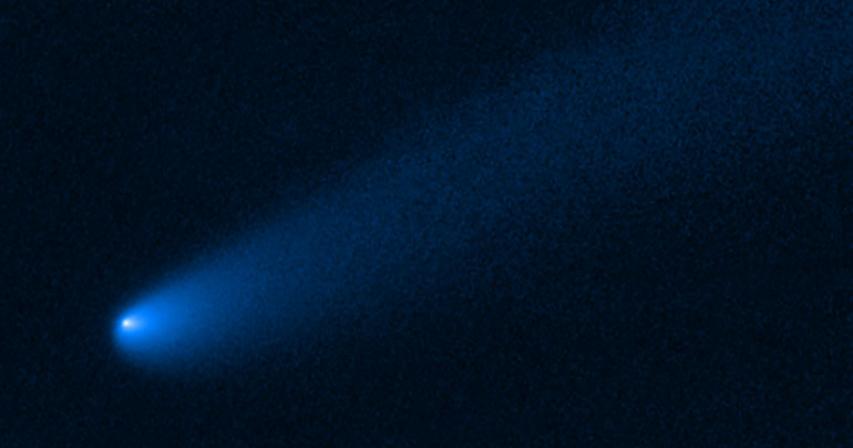It has recently come to light that NASA’s Hubble telescope has spotted a young comet that took a temporary parking place near Jupiter’s asteroids. The comet settled near a family of ancient asteroids called “Trojans” that orbit the sun alongside Jupiter. According to NASA, this is the first time a comet-like object has been spotted near the Trojan population.
NASA report states that the research team's computer simulations show that the icy object, called P/2019 LD2 (LD2) swung close to Jupiter about two years ago. Jupiter then gravitationally punted the wayward visitor to the Trojan asteroid group's co-orbital location, leading Jupiter by about 437 million miles.
"Only Hubble could detect active comet-like features this far away at such high detail, and the images clearly show these features, such as a roughly 400,000-mile-long broad tail and high-resolution features near the nucleus due to a coma and jets," said lead Hubble researcher Bryce Bolin of Caltech in Pasadena, California. The image has been shared by NASA Hubble where the caption states that although the comet has taken a temporary stop near the trojans, it won’t be staying there for very long.
NASA’s Hubble Space Telescope managed to capture visible-light snapshots that show signs of comet activity. These include a tail, outgassing in the form of jets, and an enshrouding coma of dust and gas. NASA report states that once the comet gets kicked out of Jupiter’s orbit and continues its journey, it may meet up with the planet again.
"Short-period comets like LD2 meet their fate by being thrown into the Sun and totally disintegrating, hitting a planet, or venturing too close to Jupiter once again and getting thrown out of the solar system, which is the usual fate," said team member Carey Lisse of the Johns Hopkins University Applied Physics Laboratory (APL) in Laurel, Maryland. "Simulations show that in about 500,000 years, there's a 90% probability that this object will be ejected from the solar system and become an interstellar comet."

Comments